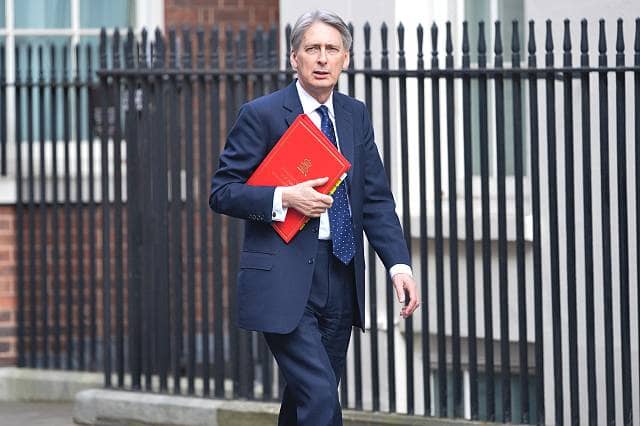While the high inflation rate of recent years is now falling, many employees will likely be feeling the squeeze on their wages for some time to come.
Especially since inflation has outpaced the annual growth in hourly pay for most occupations in the UK.
Between April 2021 and April 2023, UK inflation averaged 7.8% a year – a cumulative increase of 16.2%.
Just one in four (26%) full-time job roles saw their hourly earnings grow at a faster rate, according to new analysis of official earning figures by HR and payroll software provider Ciphr.
Ciphr compared average median hourly earnings (excluding overtime) for full-time occupations in 2021, 2022 and 2023 (the most recent figures available from the UK’s Office for National Statistics) to find out which jobs had seen the biggest increases and decreases in pay during the cost-of-living crisis.
According to their findings, just 90 job roles (26% of those with data available) reported strong salary growth of 16.2% or more between 2021 and 2023. Some (10%) occupations even saw hourly pay rises over 30%.
That’s significantly higher than the average median raise awarded to a typical full-time UK employee since 2021. They received a more modest 11.8% pay bump – with the basic hourly rate increasing from £15.57 to £17.40, which works out to around £33,930 per annum (pa). This is the average pay increase for the median or ‘middle’ employee, so millions of workers will earn less than this amount, just as millions will earn more.
Among the job roles† with the biggest wage increases in percentage terms (compared to 2021) are publicans and managers of licensed premises (+38% pay growth); vehicles and metal goods assemblers (+36%); senior fire, ambulance, and prison officers (+34%); web designers (+31%); catering and bar managers (+31%); bar staff (+31%); bar and catering supervisors (+29%); and chefs (+28%).
The top 10 jobs for inflation-beating wage increases since 2021 (ranked by percentage growth) are:
- Publicans and managers of licensed premises: earn £15.12/hr or £29,484 pa (+38% hourly median pay rise)
- Assemblers (vehicles and metal goods): earn £15.36/hr or £29,952 pa (+36%)
- Senior officers in fire, ambulance, prison and related services: earn £27.31/hr or £53,255 pa (+34%)
- Web design professionals: earn £22.23/hr or £43,349 pa (+31%)
- Catering and bar managers: earn £13.10/hr or £25,545 pa (+31%)
- Bar staff: earn £10.94/hr or £21,333 pa (+31%)
- Bar and catering supervisors: earn £11.54/hr or £22,503 pa (+29%)
- Chefs: earn £12.50/hr or £24,375 pa (+28%)
- Hotel and accommodation managers and proprietors: £14.93/hr or £29,114 pa (+27%)
- Public relations and communications directors: £42.09/hr or £82,076 pa (+26%)
What’s notable about many of the occupations that did get an inflation-beating wage boost, such as bar staff, waiters and waitresses, coffee shop workers, beauticians, hairdressers and barbers, and chefs, is that they aren’t typically known to be the highest-paying jobs.
Around three-quarters (74%) of the 90 job roles where hourly pay growth has outpaced cumulative inflation since 2021 still pay below the UK’s average hourly rate of £17.40 (excluding overtime). In real terms – despite the double-digit, inflation-beating salary hikes many of these low-paying roles received – spiralling living costs over the past few years are likely to have swallowed any tangible wage gains. And the impact of high inflation and soaring prices in 2023 led many workers to take on extra hours, or a second job, to supplement their incomes, as Ciphr’s cost of living survey revealed last year.
Jobs with the highest salary increases
Occupations with the highest increases in actual hourly rate since 2021 (rather than the biggest percentage growth in pay) include PR and communications directors (+£8.62 per hour pay growth); senior officers in fire, ambulance, prison and related services (+£6.90); IT directors (+£6.38); financial managers and directors (+£5.83); and web design professionals (+£5.31). The basic salary for people doing these roles has increased by well over £10,000 a year.
The top 10 jobs for inflation-beating wage increases since 2021 (ranked by monetary growth) are:
- Public relations and communications directors: 26% pay rise worth an extra £8.62/hr (+£16,809 pa)
- Senior officers in fire, ambulance, prison and related services: +34% pay rise worth an extra £6.90/hr (+£13,455 pa)
- IT directors: 18% pay rise worth an extra £6.38/hr (+£12,441 pa)
- Financial managers and directors: 19% pay rise worth an extra £5.83/hr (+£11,369 pa)
- Web design professionals: 31% pay rise worth an extra £5.31/hr (+£10,355)
- Publicans and managers of licensed premises: 38% pay rise worth an extra £4.17 (+£8,132)
- Assemblers (vehicles and metal goods): 36% pay rise worth an extra £4.10 (+£7,995 pa)
- Production managers and directors in manufacturing: 17% pay rise worth an extra £3.89/hr (+£7,586 pa)
- Social services managers and directors: 20% pay rise worth an extra £3.79 (+£7,391 pa)
- Newspaper and periodical journalists and reporters: 24% pay rise worth an extra £3.78/hr (+£7,371 pa)
Jobs with the biggest pay cuts
Only 26% of full-time jobs in the UK saw above-inflation wage increases between 2021 and 2023. Three-quarters (74%) of full-time occupations actually saw a drop in real-terms pay in 2023. Their salary increases since 2021, if any, came in below cumulative inflation (of 16.2%).
Occupational groups that fared among the worst with salary increases, on average, since 2021 (based on ONS figures) are clinical psychologists (-22%); cyber security professionals (-14%), other education professionals, including university administrators and bursars (-9.4%), legal professionals, including legal advisers, notaries and paralegals (-8.8%); electronics engineers (-7.2%); generalist medical practitioners, including GPs and hospital doctors (-6.7%); arts officers, producers and directors (-2.9%); and taxation experts (-1%).






Leave a Comment